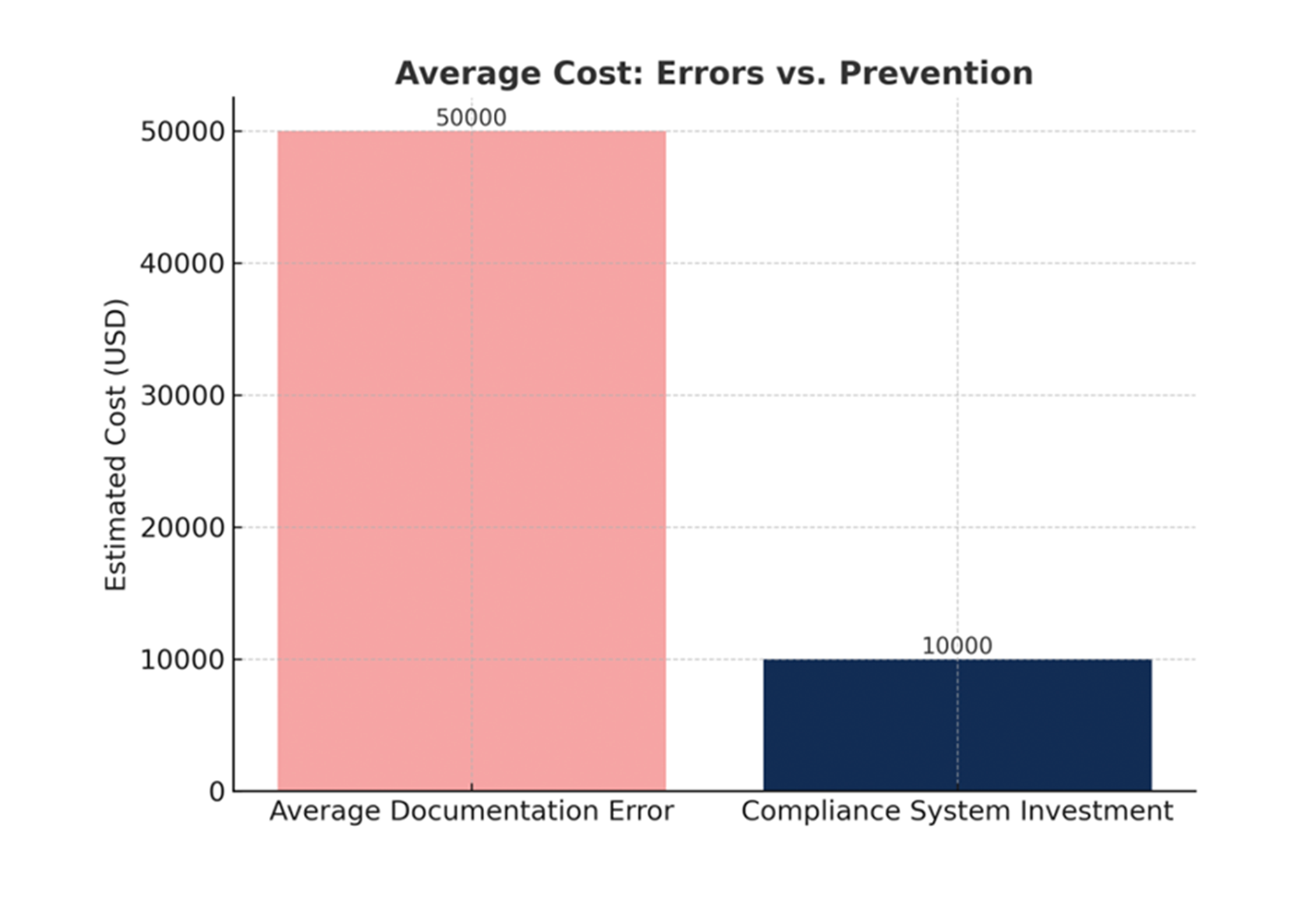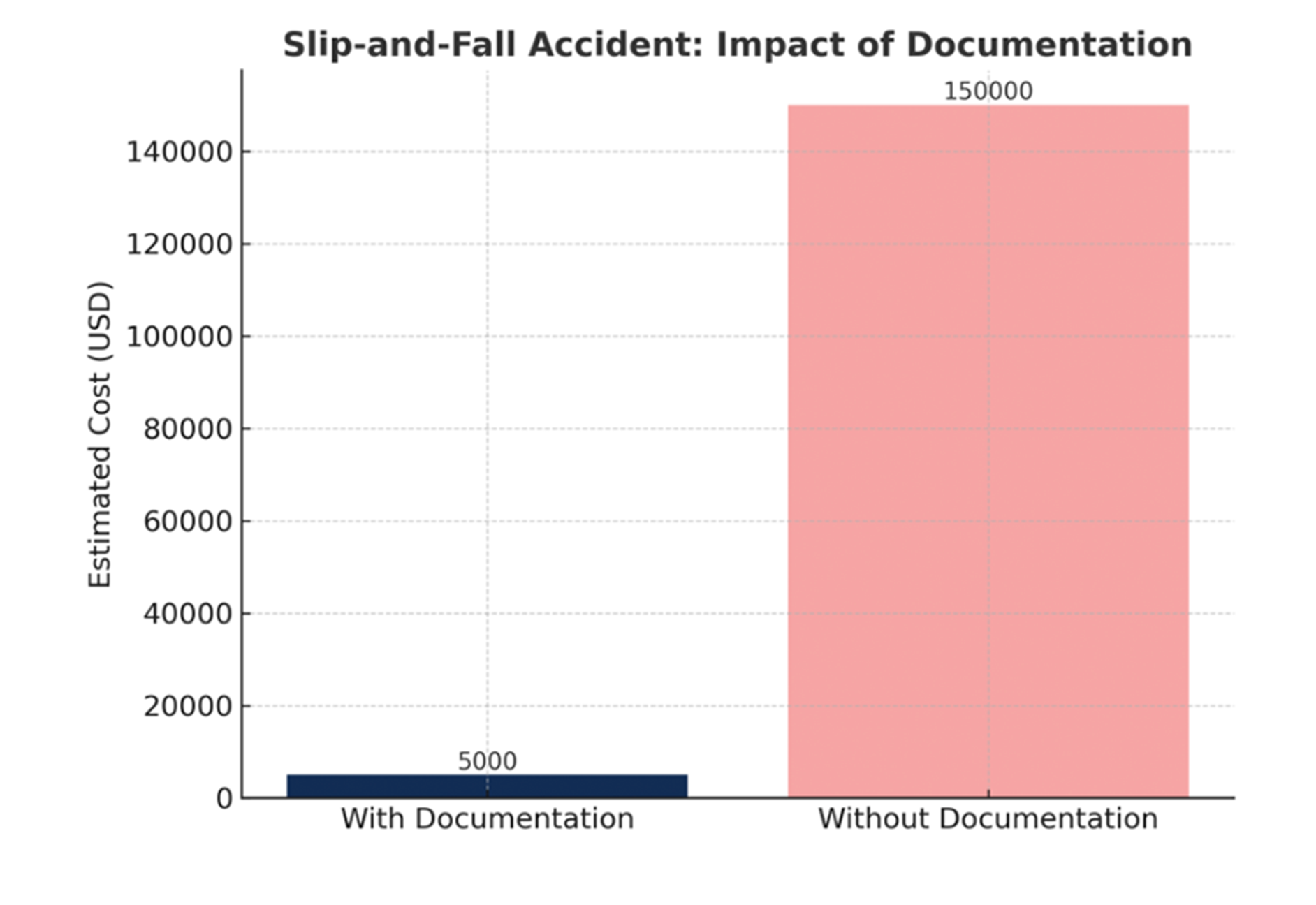COMMISSIONED BY RETAIL IQ
The Hidden Cost of Poor HR Record Keeping in Retail
How Inadequate Documentation Leads to Litigation
White Paper | 2025
EXECUTIVE SUMMARY
In today’s retail environment, margins are thin, turnover is high, and store-level managers often carry significant responsibility for both operational execution and compliance. Yet one of the most overlooked areas — accurate and consistent recordkeeping — is also one of the riskiest.
Poor documentation practices by supervisors and store managers can escalate routine issues into costly litigation. A missed incident report, a hastily written disciplinary note, or an undocumented workplace injury can trigger legal battles that cost retailers hundreds of thousands of dollars, along with reputational damage.
This white paper examines the most common documentation mistakes in retail, how those errors lead to expensive consequences, and how organizations can build simple, effective systems and training to protect themselves.
The Risks of Poor Record Keeping in Retail
Employment Disputes
- Unclear disciplinary records lead to wrongful termination or discrimination claims.
- Inconsistent notes create openings for claims of bias or retaliation.
Wage & Hour Compliance
- Missed break/meal records trigger class-action lawsuits.
- Off-the-clock work without documentation leads to liability for unpaid wages.
Safety & Injury Claims
- Inadequate incident reports inflate workers’ compensation claims.
- Delayed or missing corrective action records expose retailers to negligence claims.
Customer Complaints & Liability
- No record of complaint escalation weakens defense in claims of harassment or unsafe practices.
- Improper manager notes surface in litigation as evidence of bias.
How Poor Documentation Becomes Litigation
1. Employee Lawsuit Example – A cashier terminated for repeated lateness sues for wrongful termination. Because the store supervisor never consistently logged the tardiness, the case becomes a “he said, she said” — forcing a costly settlement.
2. Injury Claim Example – A customer slips on a wet floor. No incident report is filed, and no record shows prompt corrective action. Months later, the retailer faces a six-figure negligence claim.
3. Wage & Hour Example – Supervisors fail to maintain clear time records or approve missed breaks. A group of employees files a class-action suit for unpaid wages and missed breaks — exposing the retailer to millions in liability.
Common Mistakes Made by Store Managers & Supervisors
- Treating documentation as optional “paperwork” rather than a compliance safeguard
- Writing vague or emotional notes instead of fact-based reports
- Failing to use consistent forms or checklists across incidents
- Not escalating or recording small issues until they snowball
- Taking inappropriate “off the books” actions with no written record
Building Quality Management Systems Without Complexity
Retail organizations often resist building documentation systems because they fear adding complexity. Yet effective systems can be:
- Template-Driven – Provide simple, standardized forms for incidents, performance reviews, and customer complaints.
- Digital & Mobile-Friendly – Use cloud-based platforms so supervisors can document issues in real time.
- Accessible & Secure – Ensure managers know where to find forms, and records are stored in compliance with privacy standards.
- Integrated with Daily Operations – Embed documentation into shift checklists and routines so it becomes second nature.
The Role of Continuous Retail Training
- Initial Training – Practical sessions on how and why to complete incident reports and performance notes.
- Scenario-Based Practice – Role-play exercises simulating employee misconduct, customer injury, or wage disputes.
- Refresher Courses – Quarterly or annual training to reinforce best practices.
- Accountability Systems
– Supervisors evaluated on compliance with documentation standards.
Average Cost: Errors vs. Prevention

Slip-and-Fall Accident: Impact of Documentation

The Importance of Timely Reporting
One of the most critical — yet often overlooked — aspects of documentation in retail is the timely reporting of incidents. Even the best-designed systems fail when reports are delayed
or ignored. Speed matters not only for compliance but also for reducing both financial and reputational risks.
Why Timely Reporting Matters:
- Preserves Evidence: Details fade quickly. Prompt documentation ensures accurate accounts of events, including witness statements, times, and conditions.
- Prevents Escalation: Quick reporting allows managers to take corrective actions before minor issues turn into costly claims.
- Demonstrates Due Diligence: Courts and regulatory bodies often view delays in reporting as negligence. Immediate documentation shows the retailer acted responsibly.
- Supports Employee and Customer Trust: Staff and customers are more likely to feel safe and respected when they see issues taken seriously in real time.
Practical Steps for Retailers:
1. Clear Reporting Protocols – Establish and communicate a simple chain of command for reporting incidents.
2. Mobile-Friendly Tools – Provide managers with digital forms or apps so incidents can be recorded immediately.
3. Mandatory Reporting Windows – Require that all workplace injuries, customer complaints, or safety incidents be documented within the same shift.
4. Supervisor Accountability – Tie manager performance reviews to compliance with reporting timelines.
5. Regular Training & Drills – Reinforce the importance of same-day reporting through ongoing training sessions and real-life scenario practice.
Conclusion
In the fast-paced world of retail, poor recordkeeping is a silent liability. What feels like saving time today often becomes a six-figure lawsuit tomorrow. By equipping supervisors with simple, standardized tools and embedding documentation into daily practice, retailers can dramatically reduce legal exposure.
Quality management systems do not need to be complex — they need to be consistent, accessible, and backed by regular training. Retailers who invest in compliance.